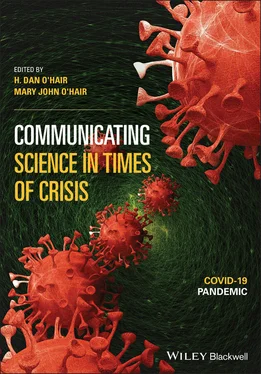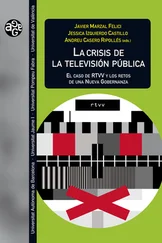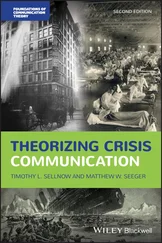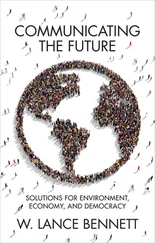Despite the existential threats involved, and likely because of the elevated levels of existential anxiety, there have been numerous emotionally volatile protests against official government directives in several countries around the globe, including the United Kingdom, United States, and Brazil (Fonseca & McGeever, 2020; Picheta, 2020; RNZ, 2020). Because these three countries in particular lean toward the individualistic end on the individualism-collectivism spectrum (Hofstede Insights, 2020), their populations tend to place relatively greater emphasis on personal freedoms; thus, when their governments issue official guidelines, such as practicing social distancing and wearing masks to slow the spread of the virus during the pandemic, a portion of their populations' protestors are likely to feel that such directives and preventive guidelines impinge on their freedoms.
From the standpoint of TMT, the importance of self-determination and individual freedom, and the consequent motivation to safeguard such rights and values can function as the basis for sustaining the integrity of one’s CWV, and thus an important form of distal defense capable of maintaining an effective shield against existential anxiety. Because the ongoing coverage of the COVID-19 pandemic is prone to provoking a stronger need for the anxiety buffering function of ones CWV, TMT would predict greater emphasis will be placed on individual freedoms, resulting in more intense objections to any preventive measures seen as hindering or violating them. On the other hand, more collectivist countries, such as China, South Korea, and Taiwan with cultural orientations inclined toward relatively greater interdependent interaction, should be more likely to welcome and eagerly adopt preventive measures such as social distancing and mask-wearing. Such behaviors should be seen as instantiating rather than violating important communal values; thus, complying with relevant government directives would demonstrate adherence to the dictates of one’s CWV, thereby strengthen the effectiveness of its anxiety buffering function.
Depending on the salient aspects of one’s CWV, either dissociative behaviors such as defiance, discrimination, and racism may be brought to the fore by the presence of divisive rhetoric in the news or more associative behaviors may be encouraged, such as promoting the socially beneficial aspects of preventative measures. Indeed, many simple, useful, and preventative behaviors are greatly on the rise (e.g., the use of hand sanitizer; Hiebert, 2020), which makes perfect sense in light of how they can function both as proximal defenses useful in fighting the virus and the physical threat it represents, and as distal defenses useful in dealing with the existential anxiety and psychological threat presented by the pandemic.
Given how proximal defenses are moderated by perceptions of their effectiveness at decreasing the threat of death and distal defenses are moderated by CWVs and self-esteem (Goldenberg & Arndt, 2008; Greenberg & Arndt, 2011), efforts can be made, respectively, to achieve greater compliance with preventive measures; promote more protective behaviors; and reduce intolerance, bigotry, and violence during calamitous events such as the COVID-19 pandemic. First, in terms of increasing successful proximal defenses, effective measures should be provided along with psychologically artful rhetoric and effective messaging capable of increasing public perceptions of the efficacy of preventive measures, as well as encouraging the receptivity of promotional messages.
Second, considering the importance and significance of the worldview validating role played by respected cultural role models, communicating the risks of COVID-19 and of the efficacy of available preventive actions by such admired people should be shaped in ways that help individuals cultivate a sense of adherence to the higher order values within their CWV. By engaging in and demonstrating preventative actions for the sake of the many as well as the individual, leaders, dignitaries, celebrities, and other admired notables can aid in normalizing such actions, helping to render them as common values, central to cultural norms.
As an effective means for slowing the spread of viruses, vaccines have played a fundamental role in controlling and eradicating diseases for decades, yet their acceptance is far from universal. Promoting vaccination not only as a critically important defense against pandemic spread, but also as a significant value central to the dominant CWV is another vital area in need of attention. At the present moment (March, 2021), scores of promising vaccines have been developed and undergone advanced human trials, with several now available and already in wide distribution (Pfizer-BioNTech; Moderna; and Johnson & Johnson) and two more in large-scale Phase-3 clinical trials (AstraZenica and Novavax), likely soon to be released (CDC, 2021). Yet, as dozens of polls indicate, there is both a national and a global hesitancy in accepting vaccination as a common preventative measure (Reynolds, 2020). Even among otherwise well-educated populations, “vaccine hesitancy” (Dubé et al., 2013) is a persistent problem for a number of reasons lacking in scientific merit, including a range of religious beliefs, superstitions, motives for indecision, and other correspondingly irrational beliefs (Bedford et al., 2018; Warner et al., 2017). Thus, countering such beliefs, and further, replacing them with more valid understandings central to a sound, well-founded, and scientific worldview should be a major goal of governments, public health authorities, educators, and concerned citizens worldwide.
Of more immediate concern, as it applies to the coronavirus pandemic, it is estimated that developing antibodies in at least 60%–70% of the population is necessary for achieving herd immunity (DeMarco, 2020); therefore, concerted efforts to attain high vaccination rates are imperative. From the standpoint of TMT, vaccine promotion by all elements of society—at the national, state, and local community levels—is critical for emphasizing the efficacy of COVID-19 vaccines, not only for immediate purposes of controlling the pandemic during proximal defense against mortal threats, but at the distal level as well, where self-esteem, interpersonal relationships, and meaningful aspects of CWV all play vital roles in ameliorating existential anxiety within the complex process of terror management defense.
The dilemma we humans find ourselves in is as obvious as it is intractable. Our remarkably impressive cognitive capacities have endowed us with the ability to reflect upon the past introspectively, experience the present in all its intensity, and contemplate the infinite. Yet, as we learn, grow, and survive, we are faced with the fragility of our existence and constantly reminded of the inevitability of our mortality and the inescapable certitude of our eventual death. Over millions of years of evolution, our species has been phylogenetically prepared and ontogenetically motivated to strive for immortality. It is the conflict between our striving for the infinite and our comprehension of the finitude of our existence that generates the potential for crushing anxiety at the prospect of ultimate demise. As TMT research has affirmed, thoughts about death frequently menace us with trepidation and threaten our equanimity on an almost daily basis. Consequently, when death thoughts become accessible, we are motivated to reduce the resulting existential anxiety via a range of conscious and nonconscious defenses. More than 35 years of empirical observation has confirmed the validity of TMT as an explanatory framework for predicting a very broad range of motivation-based phenomena, including intergroup conflict, ethnic strife, racism, derogation of dissimilar others, dogmatism, intolerance for ambiguity, and all manner of violent behaviors that some have characterized as the essence of evil (Greenberg & Kosloff, 2008; Jost et al., 2003; Lifshin et al., 2017).
Читать дальше












